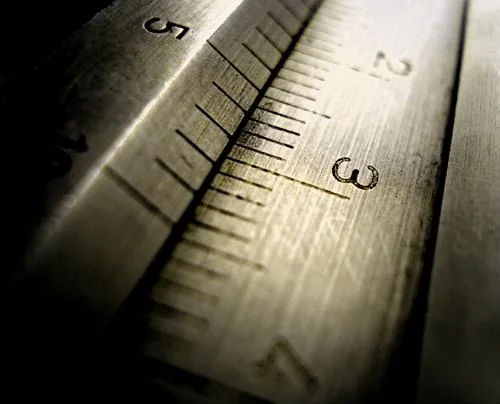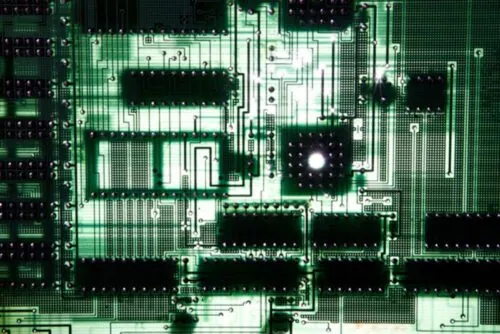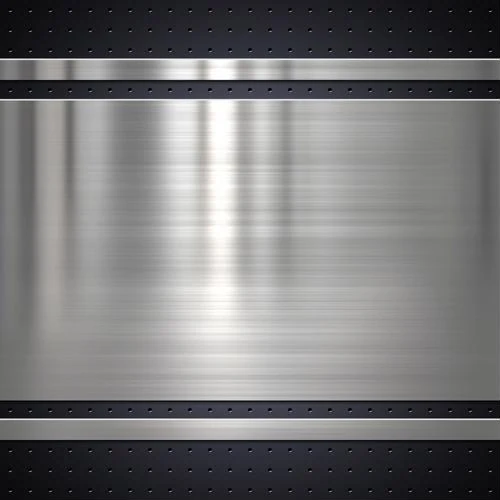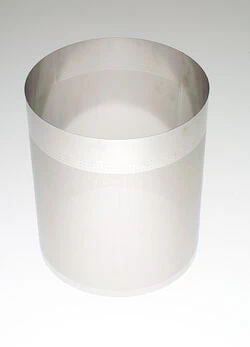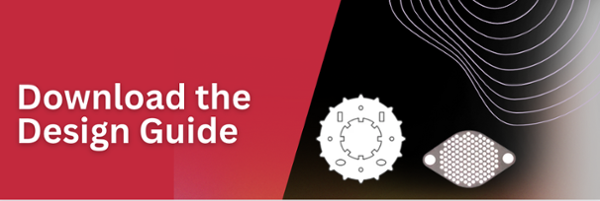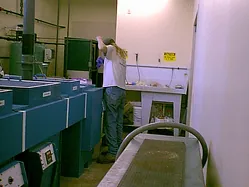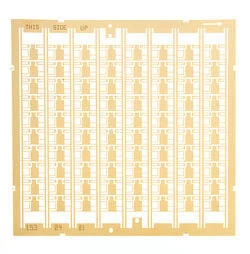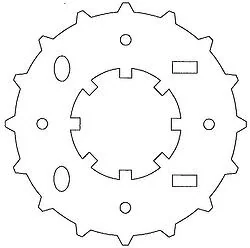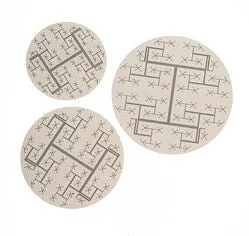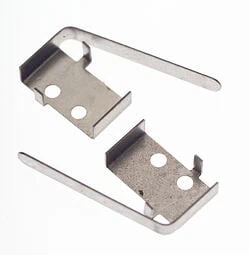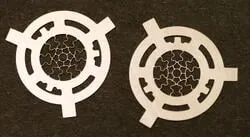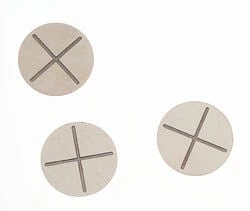DFM: What Matters in Photo Etching
Comments Off on DFM: What Matters in Photo EtchingOnce Upon a Time….
Designers and engineers would talk to the tool-and-die guys and the machinists about whether something they wanted to make could be manufactured in a reasonable way. Since the advent and evolution of 3D design environments, it seems that little of that practical knowledge was embedded in the coding rules. Thus, the modern-day mouse jockeys have the power to design almost anything, with little to no regard for the pesky realities of actually making stuff.
So here’s a true story…
Going on now three years ago, I got a call from an engineer who was looking to make some copper shims. The shims were pretty small, roughly .125 x .50 inches–which is no problem for photo etching. But then, he wanted them in 10 different thicknesses from .001 to .015″. Again, no problem for photo etching, as far as the range of thickness goes; but 5 of the 10 gauges are not standard.
So, I tried counsel him to stick with what was available, otherwise it can get expensive rather quickly. But, no, he had to have all 10 gauges. I asked why. It had something to do with some unpredictable range of variability at assembly. And I questioned that, because typically shim sets don’t hit every gauge (1-, 3-, 5-, and 10-mil sets are pretty common). But, he insisted.
Happily for him, we were able pre-etch to gauge the non-standard thicknesses at a far more reasonable cost than having custom rolled material made to order. And, he got his shims, at a very reasonable price of about .25 each.
So much for keeping it simple…
Nearly a year later, they were back for more. Now there’s a whole team of people, and boy, do they have some ideas! They have narrowed the range of shims that they need to six thicknesses (Yay!), and two of them are standard (Yay!). And, by the way, they absolutely fell in love with the idea that we can pre-etch to whatever magical thickness they want. Except, they didn’t ask us what we could actually do.
Their new drawing was asking for thicknesses like .0118+/-.0001, and .0142+/-.0001, and so forth. Realistically, +/-.0005″ on re-gauging is most likely. In etching copper, .0001″ inches is about 30 seconds. We managed to talk them off that ledge, and they agreed to +/-.001.
But, climb back up, they did…
They added a new packaging spec that required little plastic pocket trays and a specific number of shims in each pocket. Say bye-bye, bag and tag. Each shim, hand-loaded. $$
Then they asked to have these parts gold plated AND maintain total thickness tolerance of +/-.0015″. Okay, the math does -just barely- work on this in terms of the plater’s tolerances, but the parts are barrel plated and inspected to an AQL of 2.5. The yield suffered. $$$$
At this point, we’re two years in. And, we think–finally–real production can start.
It turns out, they weren’t done…
The application for this little shim, that now costs–with gold plating (barrel plating) and packaging–about $1.25 each, can’t tolerate a shim that is more than .0003″ out of flat.
Alrighty. Inspect every shim for flatness. The first obvious choice was a drop gauge. A simple, fast go/no-go answer. Except the variability in plating was just enough to kick out parts that were actually within spec.
Guess where we are right this minute. Every shim has to be mic’ed for thickness and then measured on a CMM for flatness. We don’t know yet what the yield will be, but let’s say it’s only 50%. Those shims could cost $5 each. Crazy!
In a sane world (and despite my nattering about DFM)…
This shouldn’t have happened. If the receiving application wasn’t robust enough to function with a “garden-variety” shim (packaging and plating not withstanding), some one should have said “Whoa, Nelly. Let’s fix the problem here.” Instead they put a team of engineers on it, for nearly a year, to fix the shim!
CBYD should apply here, too…
Call Before You Design. We’re happy to answer questions and more than happy to help you avoid the $5 shim “solution.”




